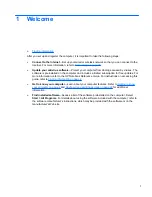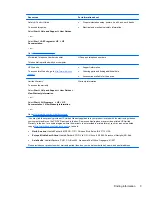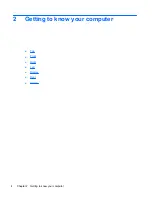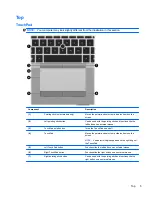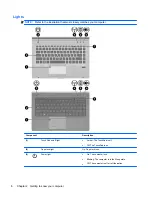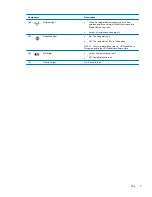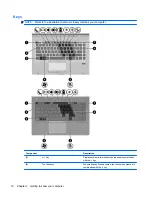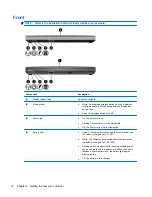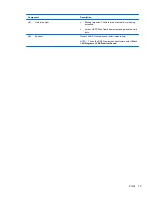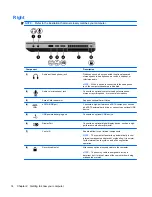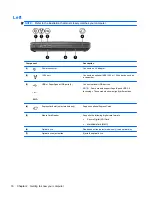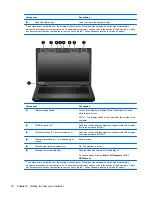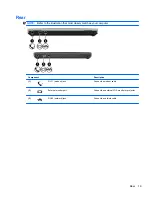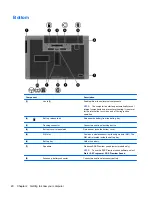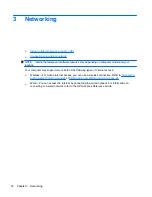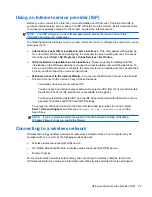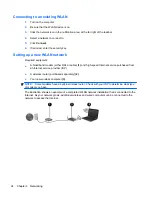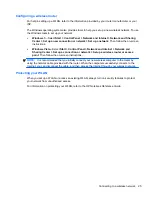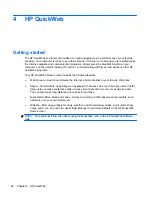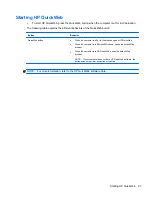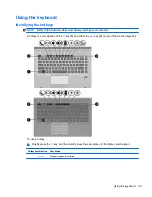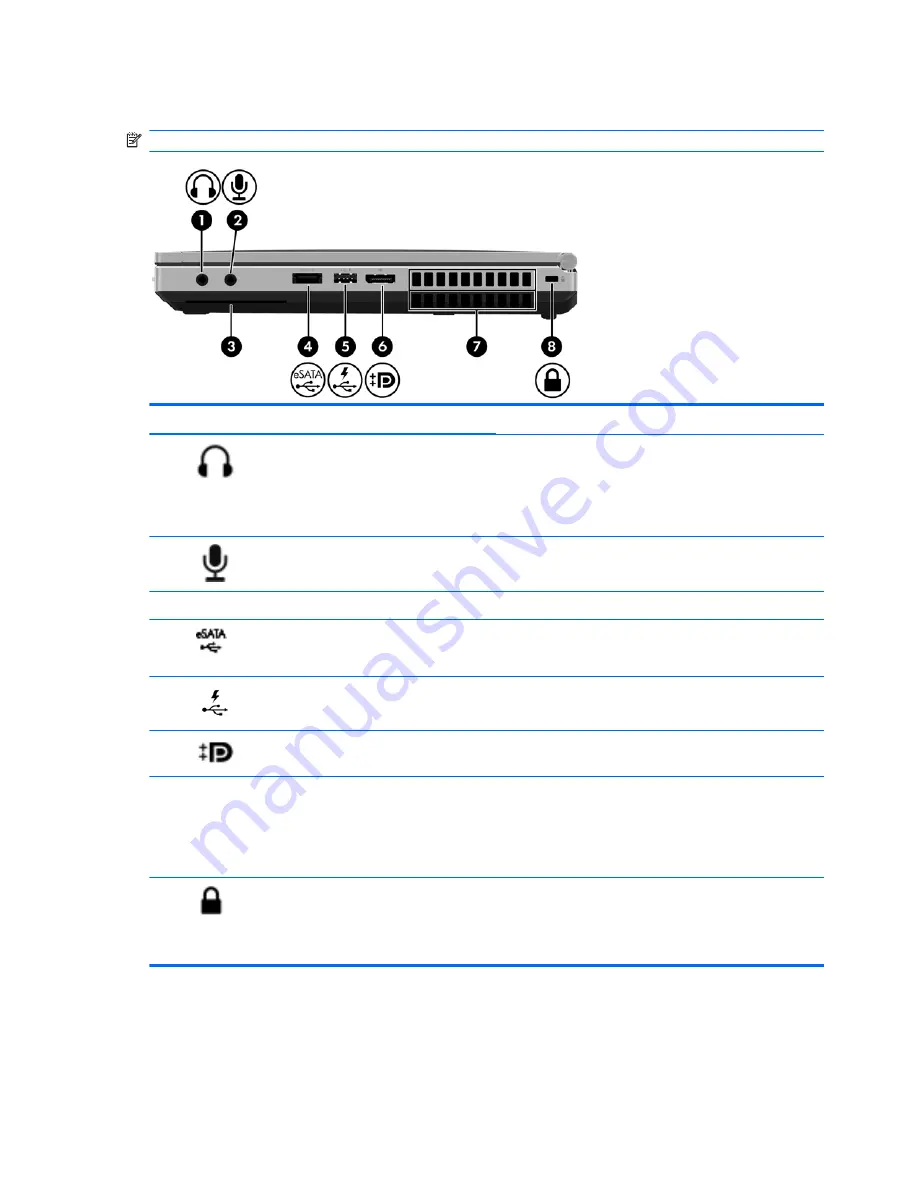
Right
NOTE:
Refer to the illustration that most closely matches your computer.
Component
Description
(1)
Audio-out (headphone) jack
Produces sound when connected to optional powered
stereo speakers, headphones, ear buds, a headset, or
television audio.
NOTE:
When a device is connected to the headphone
jack, the computer speakers are disabled.
(2)
Audio-in (microphone) jack
Connects an optional computer headset microphone,
stereo array microphone, or monaural microphone.
(3)
Smart Card reader slot
Supports optional Smart Cards.
(4)
eSATA/USB port
Connects a high-performance eSATA component, such as
an eSATA external hard drive, or connects an optional USB
device.
(5)
USB powered/charging port
Connects an optional USB device.
(6)
DisplayPort
Connects an optional digital display device, such as a high-
performance monitor or projector.
(7)
Vents (2)
Enable airflow to cool internal components.
NOTE:
The computer fan starts up automatically to cool
internal components and prevent overheating. It is normal
for the internal fan to cycle on and off during routine
operation.
(8)
Security cable slot
Attaches an optional security cable to the computer.
NOTE:
The security cable is designed to act as a
deterrent, but it may not prevent the computer from being
mishandled or stolen.
14
Chapter 2 Getting to know your computer


